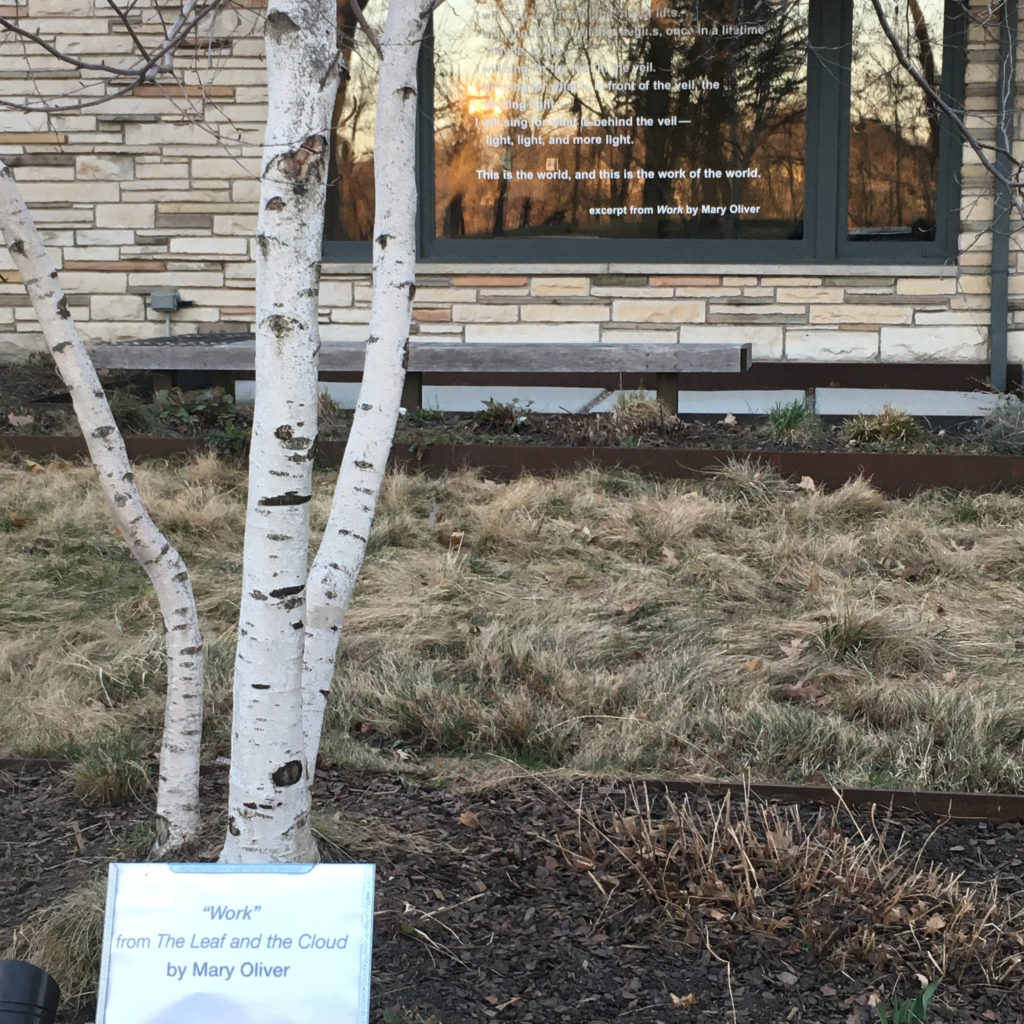4.6 miles
franklin loop
64 degrees
Mostly ran, with a little bit of walking, the franklin loop with STA. Sunny and over-dressed in shorts and a long-sleeved shirt. Who cares when it feels this wonderful outside! Usually I lament the leaving of winter, but not this year. I’m ready for summer and vaccines and less time inside. We talked for almost the entire time, but I can’t remember what we discussed. Noticed the river, looking calm and blue, glittering in a few spots. No rowers today. Easter, I guess. Heard some pileated woodpeckers, black-capped chickadees, cardinals. Still no geese. Also heard one runner’s deep, booming voice cutting through everything else. So loud, creeping up behind us. We slowed way down, almost to a walk, so he could pass faster, but it still took forever. Someday I’ll be able to block out these irritations–or, will I?
Sitting on the deck an hour after the run, I thought about some differences between Mary Oliver and Emily Dickinson. Here’s one: MO focuses on the moment when we are able to find meaning or understanding or joy or delight or something worthwhile, despite the mess of the world. Yesterday I described it this way: “MO is interested in that moment, albeit fleeting, of clarity that opens you up, or opens to you, inviting you in.” So, MO wants to find a way in. Maybe Emily Dickinson does too, but, with her emphasis on Circumference–the edges, seams, periphery, the perimeter, she also urgently wants to find a way out, an exit.
Mary Oliver is a big fan of Walt Whitman (she has a brief essay in Upstream titled, “My Friend Walt Whitman”). Could this be point where her differences with ED are visible? Here’s what Joyce Carol Oates says about the differences between ED and WW in her introduction to Essential Emily Dickinson:
Between them, our great visionary poets of the American nineteenth centry, Emily Dickinson and Walt Whitman, have come to represent the extreme, idiosyncratic poles of the American psyche: the intensely inward, private, elliptical and “mystical (Dickinson); and the robustly outward-looking, public, rhapsodic and “mystical” (Whitman). One declared: “I’m Nobody! Who are you?” The other declared: “Walt Whitman, an American, one of the roughs, a kosmos…”
Here, ED’s understanding of in is being outside the world, and WW’s out is being fully inside it (at the center?). I think this in/out, private/public, introvert/extrovert is too reductive. Still, it is helpful as a way to start thinking about the differences. In her essay on her friend, Whitman, MO writes this about why she values him:
Whitman’s poems stood before me like a model of delivery when I began to write poems myself: I mean the oceanic power and rumble that travels through a Whitman poem–the incantatory syntax, the boldness affirmation. In those years, truth was elusive–as way my own faith that I could recognize and contain it. Whitman kept me from the swamps of a worse uncertainty, and I lived many hours within the lit circle of his certainty, and his bravado. “Unscrew the locks from the doors! Unscrew the doors themselves from their jambs!” And their was the passion which he invested in the poems. The metaphysical curiosity! The oracular tenderness with which he viewed the world–its roughness, its differences, the stars, the spider–nothing was outside the range of his interest. I reveled in the specificity of his words. And his faith–that kept my spirit buoyant surely, though his faith was without a name that I ever heard of. “Do you guess I have some intricate purpose? Well I have…for the April rain has, and the mica on the side of a rock has.”
Upstream/ Mary Oliver
Such bold, confident, excessive declarations! I wonder if Susan Howe has anything to say about this in My Emily Dickinson when she writes about ED’s new grammar grounded in humility and hesitation? Lots to digest here. Now I want to read more about ED’s faith and her understanding of Circumference and how it’s positioned in relation to inside and outside.
Here are 2 MO poems, originally from Swan, that I found in Devotions:
I Worried/ Mary Oliver
I worried a lot. Will the garden grow, will the rivers
flow in the right direction, will the earth turn
as it was taught, and if not how shall
I correct it?
Was I right, was I wrong, will I be forgiven,
can I do better?
Will I ever be able to sing, even the sparrows
can do it and I am, well,
hopeless.
Is my eyesight fading or am I just imagining it,
am I going to get rheumatism,
lockjaw, dementia?
Finally I saw that worrying had come to nothing.
And gave it up. And took my old body
and went out into the morning,
and sang.
Don’t Hesitate/ Mary Oliver
If you suddenly and unexpectedly feel joy,
don’t hesitate. Give in to it. There are plenty
of lives and whole towns destroyed or about
to be. We are not wise, and not very often
kind. And much can never be redeemed.
Still, life has some possibility left. Perhaps this
is its way of fighting back, that sometimes
something happens better than all the riches
or power in the world. It could be anything,
but very likely you notice it in the instant
when love begins. Anyway, that’s often the
case. Anyway, whatever it is, don’t be afraid
of its plenty. Joy is not made to be a crumb.
